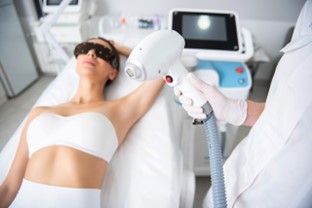Quality assurance (QA) in medical device manufacturing is crucial to ensure that products are safe, effective, and meet regulatory requirements. High-quality devices are essential for patient safety and effective treatment outcomes. Patrick Gora explores below the essential quality assurance practices in medical device manufacturing, focusing on process validation, risk management, and continuous improvement.
Process Validation
Process validation is a critical component of QA in medical device manufacturing. It ensures that production processes consistently produce products meeting predetermined quality criteria.
Defining Process Parameters: The first step in process validation is identifying and defining critical process parameters (CPPs) that impact the final product’s quality. CPPs must be controlled to ensure consistent production outcomes.
Installation Qualification (IQ): IQ involves verifying that equipment and systems are correctly installed and meet manufacturer specifications. This step ensures that the production environment is suitable for manufacturing the device.
Operational Qualification (OQ): OQ tests the equipment and processes under anticipated operating ranges to confirm they function as expected. This phase involves running multiple tests to identify potential issues and establish control limits.
Performance Qualification (PQ): PQ assesses the process under actual production conditions. It involves producing multiple batches of the device to demonstrate consistent performance and product quality.
Documenting Validation Activities: Thorough documentation is essential throughout the validation process. This documentation provides a detailed record of testing and outcomes, ensuring traceability and compliance with regulatory requirements.
Risk Management
Risk management is another cornerstone of QA in medical device manufacturing. It involves identifying, evaluating, and mitigating risks throughout the product lifecycle.
Risk Analysis: The first step in risk management is conducting a comprehensive risk analysis to identify potential hazards associated with the device. Tools like Failure Modes and Effects Analysis (FMEA) and Hazard Analysis and Critical Control Points (HACCP) are commonly used.
Risk Evaluation: After identifying risks, evaluate their severity and likelihood. This evaluation helps prioritize risks and determine which require immediate mitigation.
Risk Control: Implementing risk control measures is essential to reduce or eliminate identified risks. Control measures can include design changes, process adjustments, or additional testing protocols.
Risk Monitoring: Continuous monitoring of risks is necessary to ensure that control measures remain effective. Regular reviews and updates to the risk management plan help address new risks that may arise over time.
Documenting Risk Management Activities: As with process validation, comprehensive documentation is vital. Maintaining detailed records of risk assessments, control measures, and monitoring activities ensures compliance and provides a basis for continuous improvement.

Continuous Improvement
Continuous improvement is an ongoing effort to enhance product quality and manufacturing processes. It involves regularly assessing performance, identifying areas for improvement, and implementing changes to achieve better outcomes.
Data Collection and Analysis: Collecting and analyzing data from production processes and product performance is crucial. This data provides insights into process efficiency and product quality, highlighting areas that need improvement.
Implementing Corrective and Preventive Actions (CAPA): CAPA systems are vital for addressing identified issues and preventing their recurrence. Corrective actions resolve existing problems, while preventive actions address potential issues before they occur.
Employee Training and Development: Continuous improvement requires a skilled and knowledgeable workforce. Regular training programs help employees stay updated on best practices, regulatory requirements, and new technologies.
Leveraging Technology: Advances in technology, such as automation, artificial intelligence, and machine learning, can enhance quality assurance efforts. Implementing these technologies can streamline processes, improve accuracy, and reduce human error.
Engaging Stakeholders: Involving all stakeholders, including suppliers, customers, and regulatory bodies, is essential for continuous improvement. Open communication and collaboration help identify improvement opportunities and ensure alignment with quality goals.
Conclusion
Implementing robust quality assurance practices in medical device manufacturing is essential for producing safe, effective, and compliant products. Process validation, risk management, and continuous improvement are the cornerstones of a successful QA program. By focusing on these areas, manufacturers can enhance product quality, ensure regulatory compliance, and ultimately improve patient outcomes.
In today’s competitive and highly regulated environment, a commitment to quality assurance is not just a regulatory requirement but a strategic advantage. By adopting best practices and fostering a culture of continuous improvement, medical device manufacturers can achieve operational excellence and build trust with their customers and stakeholders.
